I admit that I hadn’t heard of the Deeno X1500 power station before the brand reached out to me. But, since you can never have too many power stations (I’m a prepper as well as an outdoorsy nerd), I took them up on their offer to send me their Deeno X1500 power station to review. Yes, it was free but that hasn’t influenced my review.
After playing around with the Deeno X1500 for a few weeks now, here’s what I think of it.
Quick Review:
The main thing to love about the Deeno X1500 power station is that, unlike other power stations I’ve tried, the fans are completely QUIET. The LCD screen is also a major pro because it gives you exact info about remaining battery, charging time left, and input and output wattage. There’s no “guesswork” like with some other power stations.
Deeno uses LiFePO4 technology, their power station will retain 80% capacity through 3,500 cycles, which is much more than the 2,500 cycles promised by other brands using LiFePO4 batteries. It also happens to be one of the most affordable power stations in its class. This makes it a great value both now and in the long run.
The major downside is that Deeno is a fairly new brand on the market. You might be inclined to pay more for a power station from a more well-known brand which has proven their products stand up the test of time.
Deeno X1500 Power Station Quick Specs:
- Capacity: 1036Wh (28.8V 36Ah)
- Battery Type: LiFePO4
- Lifespan: 3,500 cycles to 80% original capacity
- Outputs: 3x AC, 3x USB-A, 2x USB-C,Wireless charging, 2xDC (12V, 10A); 1xDC car outlet (12V, 10A)
- Wattage: 1500W (3000W surge)
- Input: Solar input, AC adapter, DC adapter
- Weight: 32.6lbs
- Size: 15 x 8.9 x 9.4 inches
What Can You Run on the Deeno X1500 Power Station? (Outputs and Max Power)
The Deeno X1500 has 12 outputs, allowing you to charge multiple devices at once. The outputs are:
- 2x USB-C (5V/9V/12V/15V-3A, 20V-5A; 100W max per channel)
- 3x USB-A (5V-3A, 9V-2A, 12V-1.5A; 18W max per channel)
- 3x standard AC plugs (120V)
- 1x car charger (12V-10A, 120W max)
- 1X DC 5.5 X2.5 (24V-5A, 120W max)
- 1X DC 5.5 X 2.1 (12V-5A, 60W max)
- Wireless charger
These outputs cover pretty much any device you’d want to use while camping. It’s pretty simple to use any of them: you literally just plug your device into the appropriate outlet and hit the “on” button.
Max Power Output
Just because there are 12 outputs, it doesn’t necessarily mean you can charge 12 devices at once. The Deeno X1500 has a maximum power output of 1500 watts. If you go over the maximum power, the power station will stop charging.
Each time you plug a device into the Deeno X1500, the LCD screen tells you how much power is being used. This is a pretty cool feature because it makes it easy to stay under the 1500W limit, even if you have no clue how much power your devices use.
Surge Power
The Deeno X1500 can handle 1500 watts of continuous power. However, it is able to handle up to 3000 watts of power for a short period of time. This is called surge power.
Surge power is important because some gadgets require a lot of power to turn on, but then use a smaller amount of power to run. Pretty much anything with a motor is going to have a high surge power. Think fridges, blenders and power tools. Surge power requirements are often 6x the amount of power that a device uses to run.
Compared to other portable power stations in its class, Deeno’s 3000 watt surge power is very high. For example, the Jackery Explorer 1000 has a surge power of 2000 watts.
How Long Can You Run Devices on the Deeno X1500? (Capacity)
The Deeno X1500 has a battery capacity of 1036Wh. This means you can power a 1W gadget for 1,036 hours, a 10W appliance for 103.6 hours, or a 100W appliance for 10.36 hours…
Even when you factor in energy loss due to inefficiency (which is inevitable with all power stations and power banks), you should still be able to get this much more from the 1,036Wh power station:
- Recharge smartphone 60-90 times
- Recharge laptop 15 times
- Fan (40 watt) for 20 hours
- Run a 12V camping cooler (60 watt) for 13 hours
To figure out how long a device will run on the Deeno X1500, use this formula:
1036Wh × 90% × 90% ÷ Wattage of appliance ≈ Run time
Note that the actual math can be much more complicated. For example, camping fridges only use power when they are cooling – which isn’t all of the time. That’s probably why Deeno claims that the X1500 can run a mini fridge for 16 to 32 hours.
Ways to Charge the Deeno X1500 Power Station (Inputs)
The Deeno X1500 comes with three charging cables. This allows you to charge the power station in four ways. You can charge and discharge at the same time!
AC Adapter Charging:
If you want to charge the Deeno X1500 ahead of time, the easiest way to do that is with the AC power adapter. It’s a fairly big “brick” that you simply connect to the power station and a wall outlet.
It takes approximately 6 hours to fully charge the power station (0% to 100%) using the wall adapter.
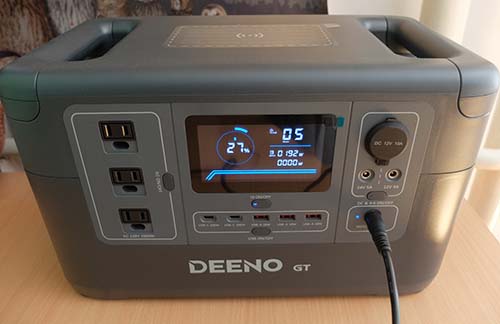
Precharging the Deeno X1500 with AC. The LCD screen tells you how much time is remaining until the power station is completely full.
Generator Charging
You can also use the wall adapter to recharge the X1500 from a standard gas generator. Why would you want to do this? Because it means you don’t have to worry about positioning your generator near your home or RV, thus potentially getting carbon monoxide poisoning. When the X1500 is fully charged, you just bring it inside to use.
DC Cigarette Lighter Port:
Use the DC adapter to charge the power station from your car’s cigarette lighter (or anything else that has a cigarette lighter output).
At 12V, it will take approximately 10 to 13 hours to fully recharge the Deeno X1500. At 24V, it will take approximately 6 hours. This isn’t a bad solution for topping up the power station while you drive.
Solar Charging:
The Deeno X1500 power station also comes with an MC4 cable for connecting it to solar panels. You can use a solar panel of up to 200W with the power station. In ideal situations, Deeno claims it will take approximately 6 to 10 hours to fully recharge the X1500 with a 200W solar panel.
Be realistic though. Solar charging conditions are never “ideal” — especially not for 6+ hours straight! In shady conditions, you’ll be lucky if you can get 5 watts going into your power station.
I don’t have the Deeno solar panel. Instead, I tested solar charging the X1500 with my Bluetti 120W panel. It was 10am in June, the sky was clear and the sun was fairly bright.
The input reading on the X1500 ranged from 55w to 75w. When I plugged in my Bluetti EB70 power station to the same solar panel, I got similar readings. However, the Deeno X1500 definitely had more variable readings. It would go from 65 and jump to 70 and then back down to 58. The Bluetti readings were more consistent. I’m not sure if this is because the readings lag on the Bluetti, or because it has more stable delivery.
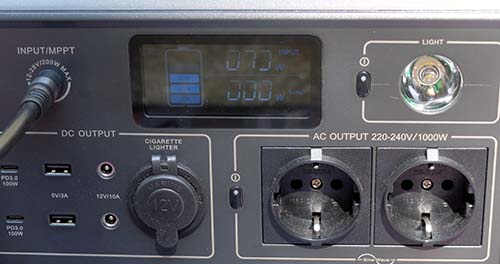
A 73W input reading on the Bluetti EB70 in the exact same conditions (I have the EU model of this one)
Size and Weight of the Deeno X1500
At nearly 33lbs, the Deeno X1500 is definitely not lightweight. It’s also fairly bulky. This is not something that I’d want to lug to a walk-in campsite. But you can’t realistically expect a power station with over 1000Wh capacity to be any smaller or lighter.
I like that the handles are retractable. This makes it easier to pack since you can put things on top of the power station.
However, I don’t like that there are two handles on the Deeno X1500. This design is nice if two people are carrying the power station together: each person grabs onto one handle. But the design is annoying if you want to carry it by yourself. You have to carry it with two hands in front of you. I’m not sure how far most people could carry 33lbs in one hand, but I’d like to have that as an option!
User Friendliness
LCD Screen
A huge plus about the Deeno X1500 is its large, clear LCD screen. When you turn it on, it clearly tells you how much capacity is remaining. When charging the power station, the circle rotates clockwise.
Each time you plug in a device to charge, it tells you how many watts you are using (which is great to prevent you from going over the 1500w limit). It also tells you “remaining hours” as you plug in devices.
In the video below, you can see how the “remaining hours” changes on the LCD screen when you plug something in. It takes a bit of time for the number to stabilize, but it’s pretty cool to see how the number changes as you plug in devices. Like how the remaining hours dropped when I started watching a movie on my laptop versus just powering it. This could be very useful if you need to make decisions about which devices to charge/use.
Alarm Icons
There are several alarm icons on the LCD screen. These alarms include:
- Overload
- Low battery
- High temperature
- Low temperature
There is apparently also a buzzer alarm which sounds. I didn’t want to mess with the power station by purposely overloading it, so I haven’t heard it.
Auto Off
One small thing I don’t like about the Deeno X1500 is the auto-off feature. If there is no power draw from the output ports for 10 hours, it will turn off. This is actually a really long time. During this time, the power station will be slightly draining. Worse, since it is running, it will get a bit hot. For this reason, I wish the auto-off feature was only 1 or 2 hours instead of 10.
Emergency Light
There is a giant LCD light on the back of the power station. It has three brightnesses plus a flashing SOS mode. Even the dimmest level is really bright!
I like that the light is diffused (as opposed to the spotlight type lights on most power stations). You can actually use it while camping. But the light design means it has to be on the back of the power station, which isn’t always convenient.
Fan and Noise
An annoying thing about most portable power stations is that the fans can be very LOUD. The fans on my Bluetti power station, for example, start humming loudly immediately when I charge it or discharge it. Apparently Ecoflow power stations have the same problem.
So I was really surprised when the Deeno X1500 didn’t make any noise. Both the power station and the AC adapter brick were completely quiet. The fans do kick on when you exceed 300W or the power station gets too hot (113F). But even then it was quieter than the Bluetti with just one phone plugged in!
Deeno X1500 Technology
Here’s where I’m going to get technical. Compared to older generations of power stations (and some which are still on the market), the technology that Deeno uses seems to be better than the competition.
LiFePO4 Battery
Older power stations use Lithium-ion batteries. By contrast, Deeno uses the newer lithium iron phosphate (LiFePO4) battery technology.
Batteries gradually lose their capacity over time (even if you aren’t using them!). Compared to older Lithium-ion batteries, LiFePO4 batteries retain their capacity much longer.
For example, the Jackery Explorer 1500 retains 80% of its capacity for 500 cycles. The Deeno X1500 retains 80% of its capacity for 3,500 cycles.
This is even better than other power stations using LiFePO4 technology. My Bluetti power station, for example, retains 80% capacity for 2,500 cycles.
The lifespan of the Deeno X1500 makes it a better investment in the long run.
Inverter
The Deeno X1500 has a pure sine wave inverter. This is the best inverter when it comes to charging sensitive gadgets like phones and laptops. It’s also more efficient.
DIBMS
Deeno has something called “Digital intelligence in electrical energy management” technology in their power stations. This technology includes various patented systems for power tracking, temperature control, and overcurrent protection.
Price and Value
The Deeno X1500 is surprisingly affordable. Power stations by major brands (think Ecoflow, Bluetti, Anker and Goal Zero) in the 1,000Wh capacity range cost uusually cost at least 30% more. Some even cost twice as much.
There are some generic brands of 1,000Wh power stations which cost about the same as Deeno, but some of these don’t use the better LiFePO4 technology – meaning they will lose capacity faster.
This was honestly a big worrisome to me at first: I asked the brand rep about why their prices are so low and he said, “The price is partly because of our marketing strategy… As a new brand, we have to attract users.”
So I wouldn’t be surprised if the price goes up once/if Deeno becomes more popular of a brand – especially since they have some new power stations coming out soon.
Until that happens though, Deeno is currently one of the most affordable power stations available. When you look at the price per Wh of capacity, the X1500 is actually pretty cheap.
Verdict
With over 1,000 watt hours of capacity, the Deeno X1500 is perfect for weekend camping trips where you need to run some larger devices like 12V coolers. The capacity is also great for keeping your devices charged on longer camping trips or as a backup power solution for blackouts. Even if you have low power needs, the affordable price of the X1500 makes it worth choosing over lower-capacity power stations. Just be realistic about how much you will be able to lug around a 33lb power station!


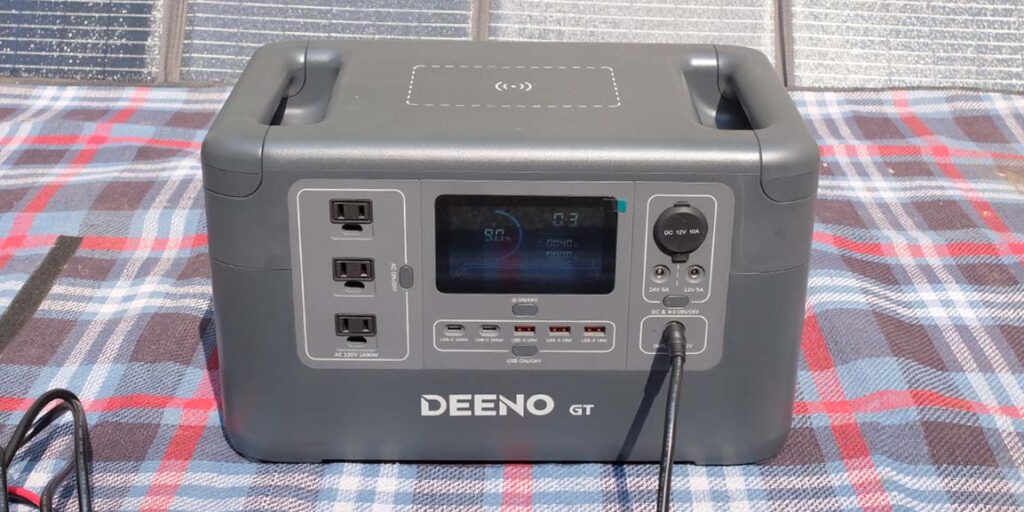
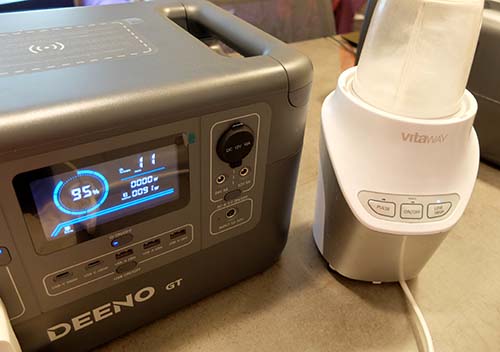
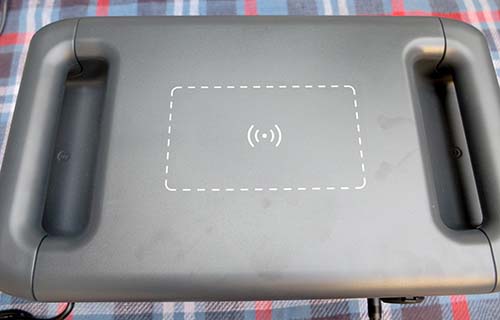
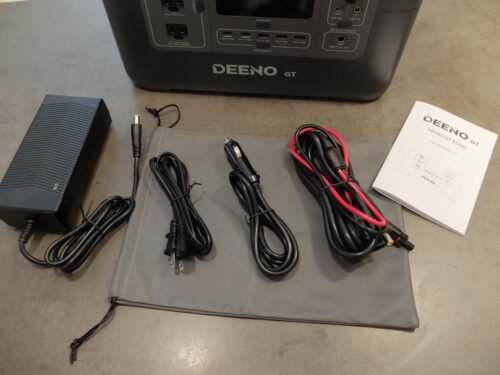
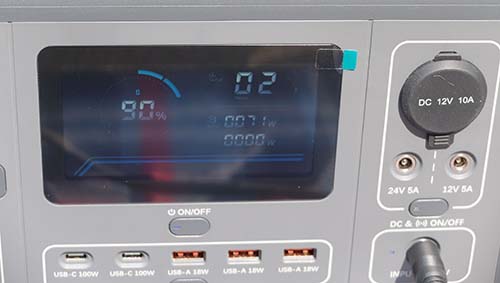
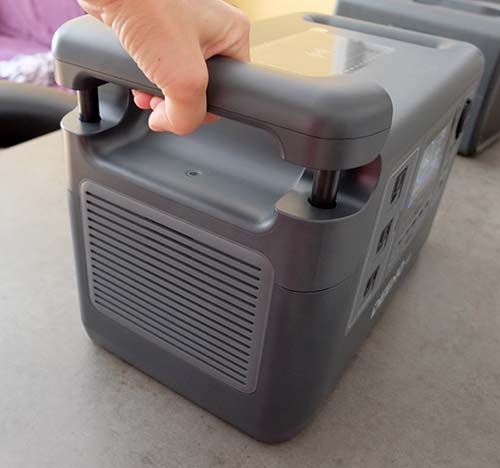
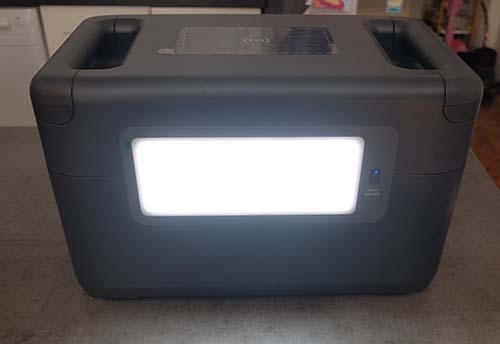










Post your comments